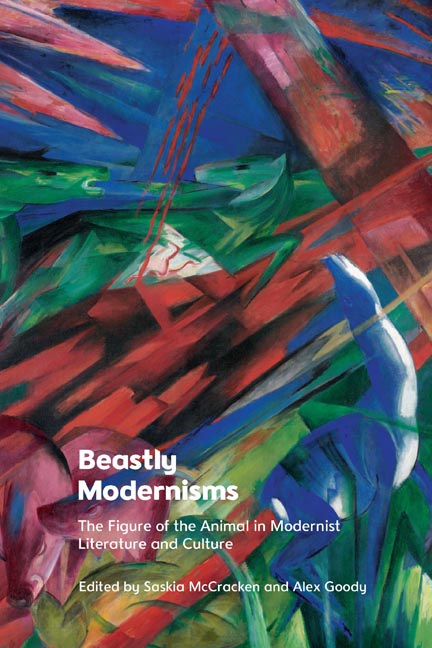Book contents
6 - The Taxidermic Imaginary in Modernist Literature
Published online by Cambridge University Press: 21 October 2023
Summary
This chapter foregrounds taxidermy’s function in the development of the modernist human–nonhuman imaginary through a new materialist theoretical lens. In it, I map the shifting poetics, politics and problematic ethics of taxidermy in modernist literary expression from the 1860s to the 1950s. This expanded historical scope, beyond the standard limits of the modernist period, allows me to trace the relation between four significant discursive shifts concerning the literary representation of taxidermied bodies: first, the ‘enchantment with the authenticity of actual animal bodies’ (Bezan and McHugh 2019: 133–4) that the taxidermied animal-as-object introduces to museum dioramas and commodity objects in the nineteenth century; second, the popularity of Victorian anthropomorphic taxidermy, which, in its confusion of taxonomic boundaries and hierarchies, alters the literary representation of both human and nonhuman animals from Charles Dickens to Lewis Carroll; third, an emergent modernist reconsideration of the taxidermied nonhuman animal as a figure of uncanny inauthenticity, an assemblage of deceitful and ideologically loaded signifiers; and fourth, a late modernist taxidermic literary mode which explores the intersecting topoi of the human becoming-animal, becomingobject and becoming-dead as reflection points for the posthuman themes of living posthumously and the transgressed limit. Within this framework, I historicise the discursive and material interfaces between taxidermic and literary practices in the modernist and late-modernist era through close readings of representative short stories and novels by H. G. Wells, Ernest Hemingway, Virginia Woolf and Myles na Gopaleen (Flann O’Brien). To diverse ends, and with varying degrees of complicity, the texts under analysis interrogate taxidermied objects as commodities through which certain discourses of hygiene, humanism, science, colonialism, race, gender and class gain an unearned legitimacy in the public imagination, with material consequences for both human and nonhuman bodies.
ARRANGEMENTS OF SKIN: HISTORICISING TAXIDERMY
Taxidermy’s emergence as a modern technological and commercial practice is marked by Louis Dufresne’s 1804 use of the term taxidermie from the Greek taxis (to arrange) and derma (skin), in place of the then common French appellation empailler (to stuff with straw) (Aloi 2018: 49).
- Type
- Chapter
- Information
- Beastly ModernismsThe Figure of the Animal in Modernist Literature and Culture, pp. 107 - 122Publisher: Edinburgh University PressPrint publication year: 2023



